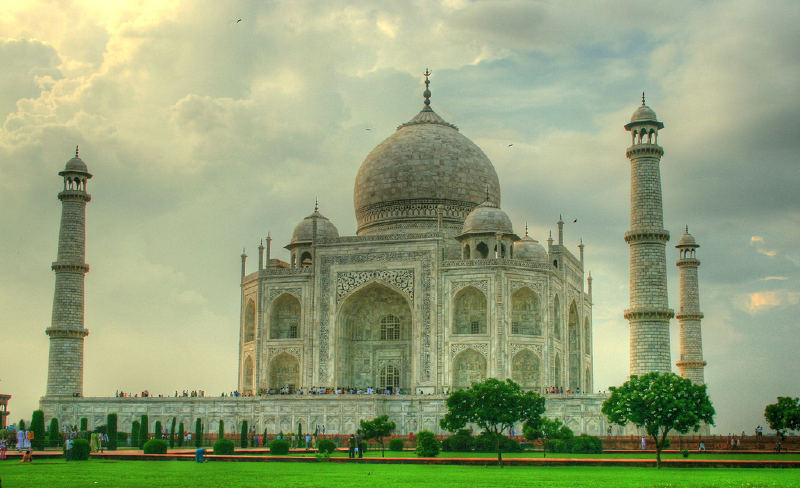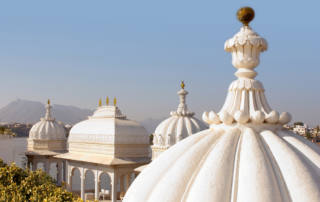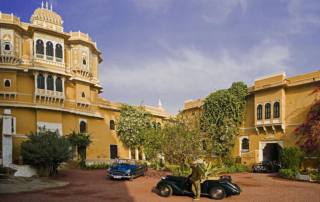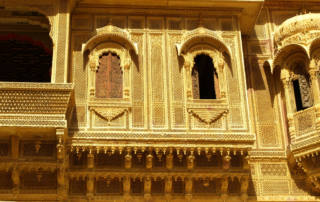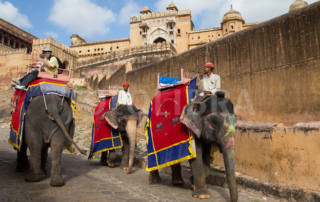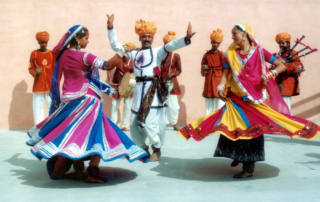6 DAYS/5 NIGHTS
Want to Know More About The Tour?
ABOUT
Undoubtedly the best trip for any first-time traveler to India with lack of time which shows you the best during the short period, the trip takes you back to trough time when you visit the capital of India which is ruined 7 times and still tells you lots of stories, moving further to Agra to witness monument of eternal love The Taj Mahal, and finally showing you the capital of Princely state of Rajasthan
Pre-departure planning is important. Here are certain things you should watch for and plan for.
Visas
Check with the Indian consulate or embassy in your country to find out if you will need a visa to visit the country of your destination, especially for an extended period of time. Some countries have extremely detailed and complicated entry/departure laws, and treat visits of a week or two very differently from longer stays.
Money
If you’re traveling to one area, check the cost of living there. If it’s high you’ll probably want to budget more carefully and save some money before leaving. The lower the cost of living the less you’ll have to save, but be sure to have a backup reserve in emergency cases.
General Tips
Talk to other people who have done a similar trip.
If you don’t know anyone personally, try any of the dozens of online travel websites full of first-person travel stories covering every possible type of trip.
Plan big and loose. Read everything you can about the area.
There may be sights and attractions you didn’t know about. A rough outline of your trip might have three or four target points and a variety of ways to get between them.
You don’t want to find out that the weather isn’t what you thought, or the guide book was incorrect, after committing to 6 weeks in a specific spot.
Some trips will allow you more leeway than others. Travel plans in Asia can often be made day-by-day while summer travel in Europe should be organized at least a few weeks ahead unless you’re prepared to hunt around for hotel rooms and train seats.
Set up a pre-trip timeline so you don’t end up with a full to-do list during your last week of work or school.
Things to consider are doctor’s visits for a check-up, inoculations, and prescription refills; purchasing plane tickets; renewing passports and obtaining visas and other documents.
Check your insurance coverage abroad and purchasing additional travel insurance if needed. Don’t forget visiting friends and family members!e
The longer the trip, the lighter you should pack. This might seem strange, but it’s true you can afford to lug a heavy bag around for a week or two, but do you want to have anything extra for a year?
Stick to the absolute basics and know what you can and cannot buy at your destination(s). There’s no point in bringing 6 months of toothpaste to Europe or buying a sarong at home to take to the tropics. If you are visiting several climates, try to arrange it so you visit the warmer places first and the coldest last. That way you can purchase sweaters and long pants and not have to carry them any more than needed. Alternately, visit cold climates first and then ship unneeded layers home — or sell them off.
A good rule of thumb is to bring one outfit for the hottest day you’re likely to encounter, one for an average day, and one for the coldest.
Make sure everything goes with everything else (if that’s important to you), and remember that layers are always best.
Be prepared for uncomfortable trips. You will often find yourself in a busy, cramped, economy class environment and it could be for many hours – especially long plane trips.
If you want to arrive at your destination refreshed and able to enjoy the sights, then try a good quality travel pillow to support your head, some earplugs to block out the screaming babies, and an eye cover to block out the sun or cabin lights.
Just avoid those cheap U-shaped pillows from airport shops – your head drops forward and you wake up with a stiff neck.
Make contact with the locals before you go.
Maybe you have a friend-of-a-friend or a foreign exchange student from high school you remember, or just found a friend through a travel website; almost everyone is happy to welcome a foreign visitor to their hometown. This might be as elaborate as a homestay for a few weeks, or just coffee in their hometown or dinner at a local restaurant.
Getting Around
Make your own way or if there are too many great things to see, follow the lead of a guided tour.
A perfect city for exploring on foot with a shop around every corner. Much of the inner city can be walked without trouble, however, in parts walking includes crowds, uneven streets, heavy traffic, and skinny sidewalks. If that’s a problem, there are plenty of taxis to ride in and scooters to rent.
How to Travel
- Subway – The metro is the fastest transportation. Running 5 am to 10 pm every day in all the Major Cities of India.
- Bus & Train – Operated by an independent organization, busses and trains include wifi access for the public. You can take any bus or train marked with the (B Public) sign for free.
- Taxi – Available in all parts of the city. From a restaurant or hotel you can have them call the city taxi service.
- Car – Rental cars are easy to get and hotels have good parking prices. Once in the main city, you can often walk so we suggest returning the when you arrive.
- Bike – The best way to get around, other than walking, is by bike. If you don’t mind hills, you can bike anywhere. If that’s not for you, stick to the inner city with your bike.
Mini Trips
Just a few miles away you can explore the history and legacy, drink wine and relax. You can wander the hills or be lulled by the fountains. If you have time, the attractions can fill 3 days. We’ve highlighted the best ones here.
Tours
Because of the number of sights to see, some first-time visitors should start with an organized tour. Some things can be covered in-depth, other are just useful for getting your bearings.
The leading tour operators use local historians to lead their tours. Guides offer walking tours, including visits to monuments, museums, and historic locations, as well as eating tours. Tour prices can be high, but most participants consider them a trip highlight. In addition, there are many family related tours, sights, and more appealing activities for children.
Walking tours, like the 3 hour ghost tour, is an exclusive in the early evening. A bus excursion ruins special tours like you’ve never seen. Also worth consideration, a group of art historians and architects do a theatrical retelling from dramatic scripts. Go on a tour, and expect guides to break out into a rendition of “Singing in the Rain”, it’s a lot of fun.
- Rickshaw Ride in Old Delhi
- Elephant ride in Jaipur
- Tonga Ride Agra
- Visit to Taj Mahal
T ravel Resources
Travel planning is about more than just knowing where you’re going. Prepares to navigate, take control and be ready for anything. This section helps you steer clear of disaster and stay open to enjoy the unexpected.
Quick Tips
- Banks – Open Monday to Friday 9 am to 2 pm. Some banks are closed for lunch.
- Emergencies – For police, dial a local phone number; for an ambulance call a hospital.
- Internet Access – Wifi is standard in most hotels and free in many coffee shops.
- Mail – Buy stamps at the Post Office. Convenient post offices have located in all cities. Most are open Monday to Friday 9 am to 3 pm.
- Safety – Pickpocketing can be a common problem. It is suggested for men to keep wallets in their front pockets. Purse snatching also occurs at times.
Visitor Information
This site contains information with a very personal and friendly structure. It also has great links to other related sites online.
Information, internet access, maps, and train passes are available at local Tourist Information terminals. These are located at various sites around the city. Expect a wait if you arrive late in the afternoon or during lunchtime. Local travel agencies are also helpful for quick information and finding hotels. There is no service charge for these services. Hours are Monday to Friday 9 am to 5 pm, and Saturday 10 am to 2 pm.
Transportation
Getting in from the airport and other arrival locations. Travel planning is about more than just knowing where you’re going. Prepares to navigate, take control and be ready for anything. This section helps you steer clear of disaster and stay open to enjoy the unexpected.
- Plane – Flights arrive at the main airport near the city center. If flying from European cities, you might land at a connecting airport. There is a tourist information office at the Terminal E, international arrivals, open 8 am to 6 pm.
- Train – A train station is on the lower level of the airport. To get into the city, follow the marked signs.
- Taxi – From the airport, there is a flat rate for the 1-hour trip, depending on traffic.
- Train & Bus – Trains and buses arrive at the city center. This is the transportation hub for the city and is surrounded by hotels.
A perfect place for exploring on foot, with local shops around every corner. You will eventually walk somewhere, it’s just going to happen. If you don’t like crowds, uneven cobblestones, heavy traffic or narrow sidewalks, take a taxi or rent a scooter.
Arrive in Delhi, where you will be greeted by a Horizon Worldwide representative, transferred to your hotel and assisted with check-in. The rest of the day is at leisure to explore Delhi on your own or relax at the hotel
Today you will head off for a full day of sightseeing in Delhi, a special blend of old and new, Delhi is a bustling, energetic city of contrasts. The old city was founded in 1639 under the Mughal ruler Shahjahan and was known as Shahjahanabad, later known as Old Delhi. In the early part of the 20th Century, the British arranged for a leading architect, Edward Lutyens, to design a new city to be the Capital of India, known as New Delhi.
Your tour will start with Old Delhi where you will visit the Jama Masjid, the principal mosque of Old Delhi and possibly the finest in India. Afterward, visit the Raj Ghat, where Mahatma Gandhi was cremated, and enjoy a walk down ChandniChowk, the original market area of Old Delhi. Finally drive past Delhi’s Red Forest, Emperor Shahjahan’s palace.
Spend the afternoon exploring New Delhi with your guide, past India Gate, the Parliament building, and Rashtrapati Bhawan, the President’s residence, all outstanding examples of Lutyens architecture. Head to south Delhi to visit Qutab Minar, a tall stone tower of 72.5 meters high and 379 steps leading to the top. Finally visit Humayun’s Tomb, the precursor of the TajMahal, built by the widow of Emperor Humayun.
An early start today as you leave Delhi and travel to Agra, the drive will take approximately 4 hours, on arrival in Agra you will head to your hotel and check in before heading out for a tour of Agra.
Your guided tour today will explore some of the best architectural wonders of the Mughal period including Sikandra, the mausoleum of the greatest Mughal Emperor, Akbar, the massive yet elegant Agra Fort, and of course, the world-famous TajMahal.
After breakfast check out of the hotel to begin your journey to the Pink City of Jaipur. En route visit the abandoned Mughal capital of Fatehpur Sikri, one of the best-preserved collections of Mughal architecture in India.
Once you arrive in Jaipur and check into your hotel the rest of the day is free to unwind and enjoy all the facilities and comforts available at the hotel.
You will travel outside of the city to Amber Fort, built by one of Emperor Akbar’s generals. This beautiful fort can be reached by elephant or jeep, walk around the complex of courtyards and halls, visiting, in particular, the Sheesh Mahal or Hall of Mirrors. Continue on to the City Palace, built-in 1728, Jantar Mantar or Astronomical Observatory made by the Maharaja of Jaipur in 1726, and HawaMahal or Palace of Winds, an intricately designed building from where the ladies of the royal court used to gaze down into the street.
After early morning breakfast, transfer to Jaipur Airport for your flight to your Next Destination via Delhi.
INCLUSIONS IN THE ITINERARY
RELATED TOURS:

